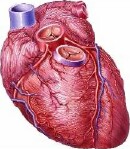- Skip Storing This Everyday Product in the Fridge Door
- Green Tea + B3 Pairing May Boost Brain Health
- Navigating Your Midlife Crisis: Embracing New Possibilities
- City Raccoons Showing Signs of Domestication
- Mapping the Exposome: Science Broadens Focus to Environmental Disease Triggers
- One Week Less on Social Media Linked to Better Mental Health
- Your Brain Changes in Stages as You Age, Study Finds
- Some Suicide Victims Show No Typical Warning Signs, Study Finds
- ByHeart Formula Faces Lawsuits After Babies Sickened With Botulism
- Switch to Vegan Diet Could Cut Your Greenhouse Gas Emissions in Half
Scientists Pinpoint Which Kids With Heart Muscle Disease Are in Most Danger


WEDNESDAY, Sept. 4New research has identified key risk factors that predict which children with a potentially fatal heart muscle disease will face the greatest risk of death or need for a heart transplant.
The findings could help doctors figure out which patients with hypertrophic cardiomyopathy will benefit most from transplant surgery.
“If we knew who was in the gravest danger from this condition, we could evaluate them for early listing for heart transplant and follow them more closely,” study leader Steven Lipshultz, director of the Batchelor Children’s Research Institute at the University of Miami Miller School of Medicine, said in a news release.
Hypertrophic cardiomyopathy is a condition that causes the heart muscle to thicken, which affects the ability of the heat to function properly. People with this condition are at risk for heart failure and sudden death.
In the study, which was to be presented Tuesday at the 2013 European Respiratory Society Annual Congress and published simultaneously in the journal The Lancet, researchers examined clinical and demographic information of nearly 1,100 children diagnosed with the condition at 98 medical centers in the United States and Canada over the course of 19 years. They found children with inherited metabolic diseases or hypertrophic cardiomyopathy who are also affected by other cardiomyopathy phenotypes have a worse outlook.
The findings revealed that children who are younger at diagnosis, as well as those who have a lower weight, congestive heart failure and signs of abnormal left ventricle structure or function also are at higher risk of death. The researchers said the risk of death or heart transplant was significantly increased when children had two or more of these risk factors at the time they were diagnosed.
“Now we have identified patient risk factors that can be measured at the time of diagnosis to guide treatment decisions and help newly diagnosed patients and their families have some idea of what to expect from their disease,” Lipshultz said. “Not only is the absolute risk of death or heart transplantation significantly higher when multiple risk factors are present, but the risk increases significantly as the number of risk factors increases.”
The authors of an accompanying commentary said the findings will be a useful tool for doctors.
“These data should allow early risk stratification and close monitoring, enabling timely and appropriate listing for heart transplantation,” Dr. Robert Weintraub, from the Royal Children’s Hospital in Melbourne, Australia, and Christopher Semsarian, from the Royal Prince Alfred Hospital, in Sydney. “Identification of long-term outcomes for young patients with hypertrophic cardiomyopathy, including rates of sudden death and the effect of frequently used interventions, should be a focus for future investigation.”
More information
The American Heart Association provides more on hypertrophic cardiomyopathy.
Source: HealthDay
Copyright © 2025 HealthDay. All rights reserved.










